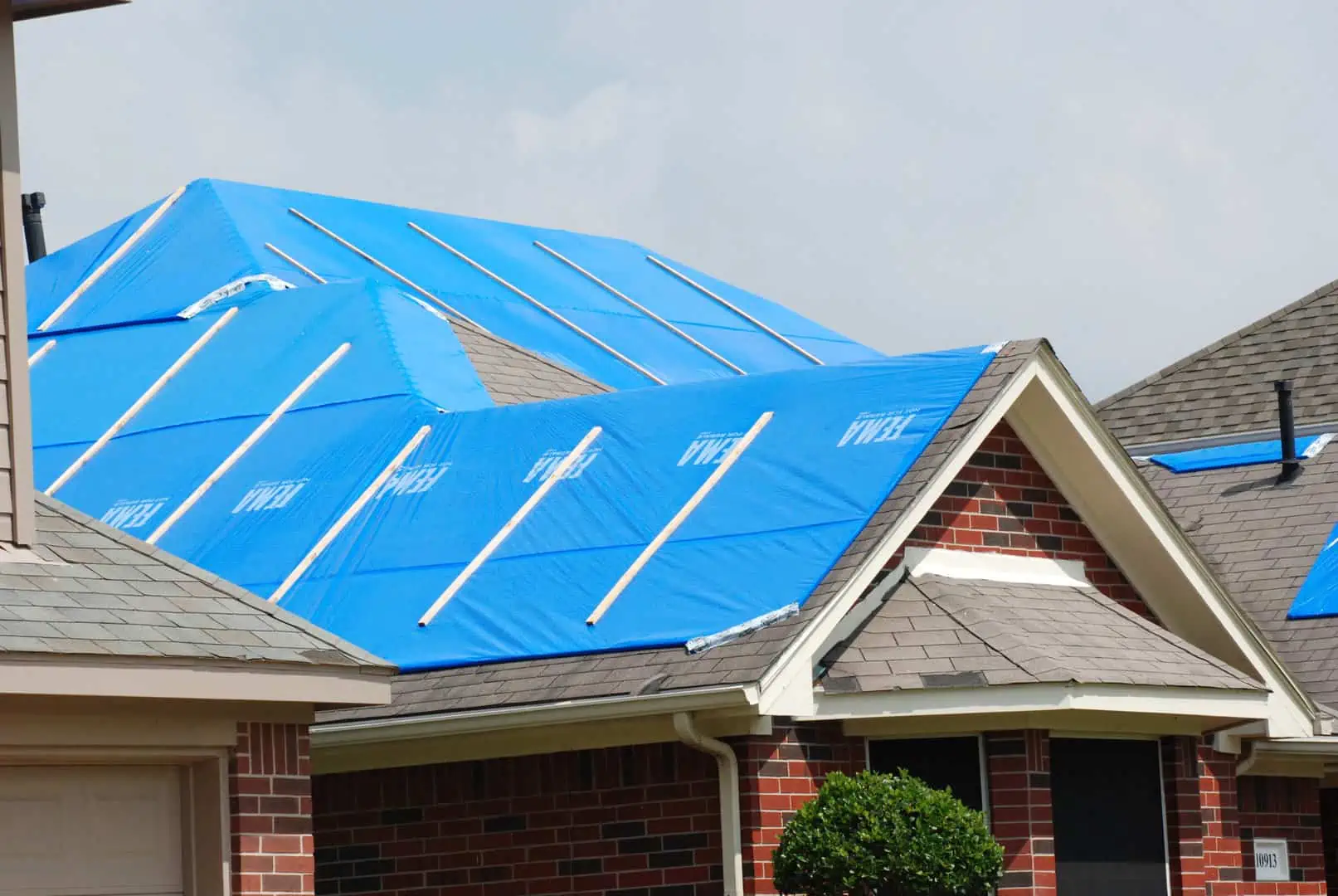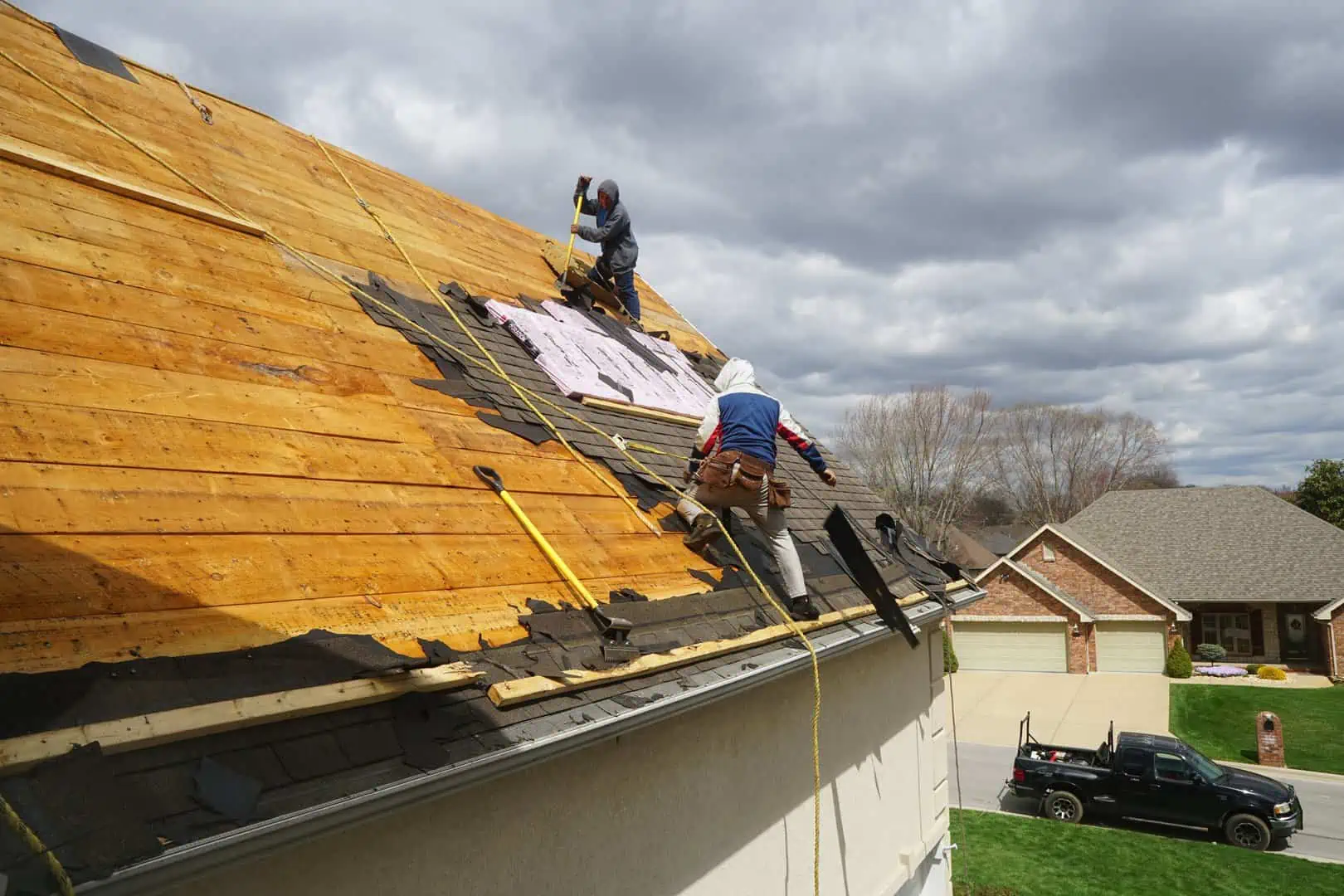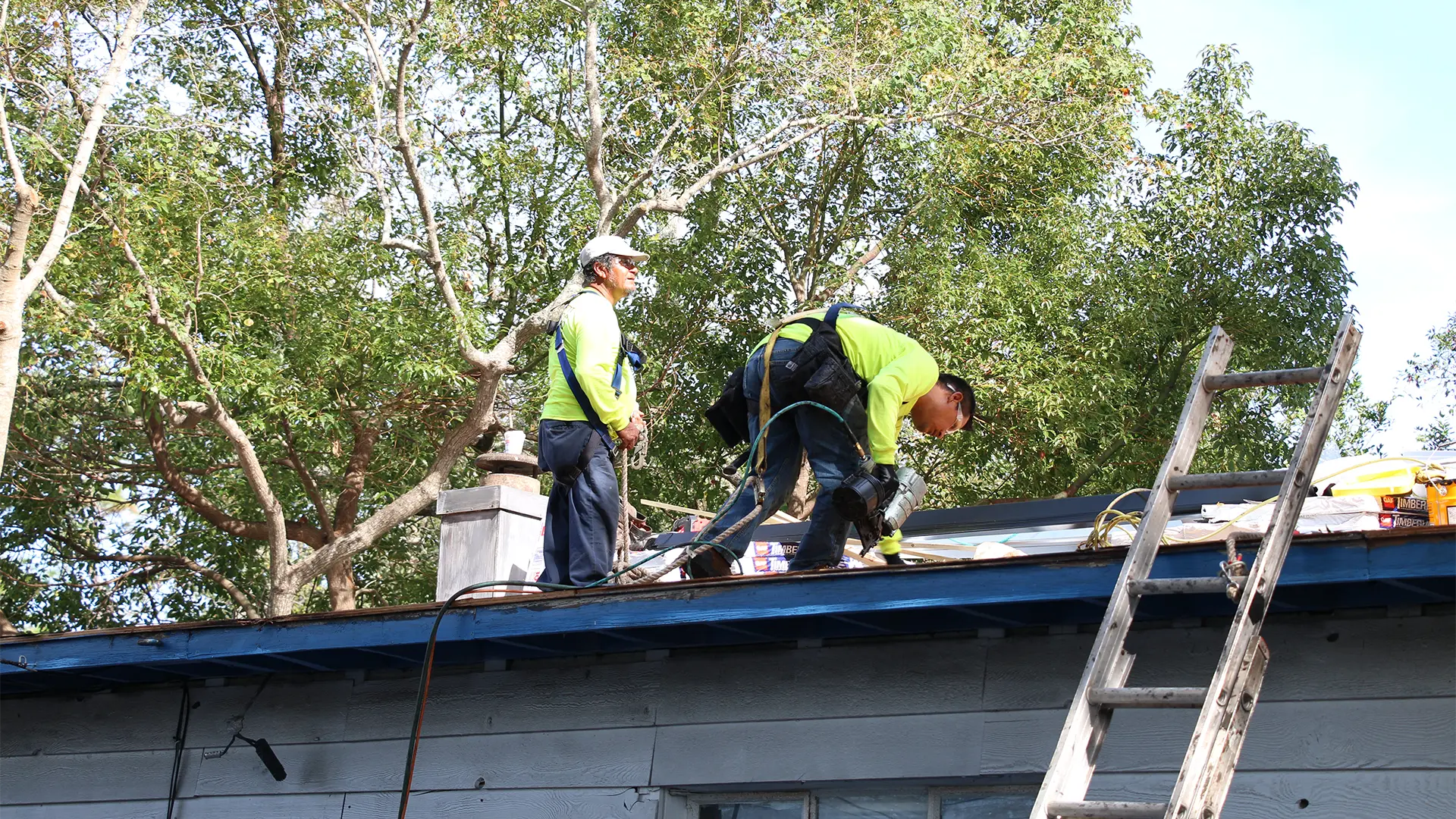Inspect Your Roof From the Ground
Climbing onto your roof after a storm is not a good idea. However, you can safely inspect your roof from the ground. Backing away from the roof will allow you to see more of its surface. Use binoculars for a clearer view, if needed. Key problems to note include:
- Missing shingles
- Lifted, cracked, or torn shingles
- Loose flashing
- Loose or missing gutters
- Dark patches on shingles
- Shingles on the ground around your home
Have a Professional Roof Inspection
If you notice anything questionable with your roof, call a local roof company and have them take a look. You should also call a roof company if you can’t see your whole roof from the ground and inspect there may be wind damage you don’t see.
Professional roofers can safely climb onto the roof and thoroughly check for damage. Make sure the company you choose is certified and has a local address. Avoid storm-chasing, non-local companies as they often don’t guarantee their work.
Make Repairs Quickly
If you or your roofer do note problems with your roof after a storm, schedule repairs ASAP. A few lifted shingles or some missing flashing may not seem like a huge deal. However, a compromised roof can let in water during the next rain shower, leading to costly water damage. Making prompt repairs prevents more serious damage.
Call Your Insurance Company
Most homeowners insurance policies cover wind damage. However, they may require you to follow a specific process when it comes to getting quotes and hiring a roofer. Call your insurer as soon as you notice roof damage. They’ll often send an assessor to evaluate the damage and tell you how much compensation they can provide.
Your roof is an important line of protection against high winds, but sometimes it sustains damage in big storms. Follow the tips above to handle potential wind damage. If you’re looking for a certified roofing company in northeast Florida, contact Reliant Roofing.


